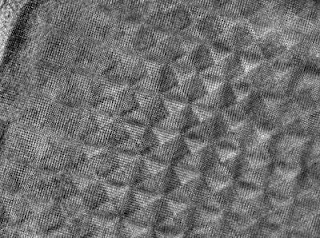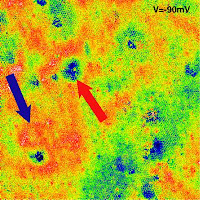PlexiLight plans to develop a revolutionary lighting source that is lightweight, ultra-thin and energy efficient because it uses nanotechnology to produce visible light directly rather than as a byproduct of heating a filament or gas. Its unique properties suggest a wide range of residential, commercial and even military applications.
"It looks like a sheet of plexiglass that lights up,” explains David Carroll, associate professor of physics and director of Wake Forest’s nanotechnology center, where the concept was born. “Together with the new high-efficiency solar cells, we are addressing the energy crisis from both the supply and demand sides.”
Carroll’s lab this spring announced a breakthrough in plastic solar cell efficiency. Researchers were able to convert a record 6 percent of incoming visible light to electricity by using “nano-filaments” similar to the veins in tree leaves. Using the new fiber optic structure, Carroll expects to raise the efficiency rate soon to a level that will make plastic solar cells competitive with existing silicon and proposed non-silicon systems. While solar collectors with the new technology might look similar to existing panels, they could be installed in new ways because their efficiency is not as dependent on the angle of the sun.
FiberCell and PlexiLight have received startup funding from Wake Forest and Connecticut-based NanoHoldings, which specializes in building early-stage nanotechnology companies around exclusive licenses from leading research universities. Daryl Boudreaux, a partner of NanoHoldings, will be the president of both startups, which will be located in Winston-Salem.
"The reason that we were attracted to both of these technologies is that they are fundamentally different and fundamentally more efficient than anything else we know about out there,” Boudreaux says. “They give us a platform from which we can develop numerous products.”
For example, PlexiLight could target development of a substitute for the fluorescent ceiling light fixtures used in nearly all commercial buildings. The new technology may lead to higher-efficiency panels that would have no bulbs or ballasts to wear out and would not give off heat that requires additional energy to cool buildings.
Electric lighting consumes about 30 percent of all the electric power generated in the nation, according to the U.S. Department of Energy, and lighting products represent a $13 billion market in the United States and a $21 billion market worldwide.
Both new companies are funding further research by Carroll’s lab to develop prototypes of various applications for the respective technologies. Boudreaux says FiberCell and PlexiLight plan to lease space at Winston-Salem’s Piedmont Triad Research Park, the downtown research campus at the juncture of U.S. Highway 52 and Interstate 40 that Wake Forest University Health Sciences is developing in collaboration with a variety of public, private and nonprofit partners. In addition to hiring Wake Forest postdoctoral fellows, some of the invested funds are being used to hire interns from Forsyth Technical Community College, who have been enrolled in its nanotechnology program.
“There has been great support for this transition from the entire community,” says Mark Welker, associate provost for research at Wake Forest. “These companies will help our research through funding back to the university, the downtown research park as a tenant, and Forsyth Tech by employing their nanotechnology program graduates.”
While numerous university research discoveries in the biomedical sciences have made the transition to the private sector from the university’s Bowman Gray Campus, Stephen Susalka, assistant director of Wake Forest’s Office of Technology Asset Management, sees a promising future for intellectual property transfers from the Reynolda Campus, including the nanotechnology center.
“The fact that we’re creating two new companies at the same time is a testament to the breadth and quality of research being pursued at Wake Forest,” Susalka says.
According to a 2005 survey by the Association of University Technology Managers, among those schools reporting, Wake Forest ranked fourth in the nation in annual license income with about $50 million in revenues. And over the past two years, Susalka notes, 15 to 18 percent of all Wake Forest research invention disclosures have named at least one Reynolda Campus inventor.
"Wake Forest supports many types of research and creative activities including innovative research that produces practical applications with commercial potential,” Welker says. “We expect that strategy to yield long-term benefits for the university, the area economy and society at-large.”
Contact: Eric Frazier frazieef@wfu.edu 336-758-5237 Kevin Cox (336) 758-5237 coxkp@wfu.edu Web: Wake Forest University
Technorati Tags: Nano or Nanotechnology and Nanotech and FiberCell or PlexiLight and Wake Forest University or nano-filaments or Embedded computers research by Virginia Tech's Shukla attracts national attention and Volkswagen Beetle classic 'Bug' and President Bush, Gordon Brown, Joint Press Availability VIDEO
 | Trackposted to Perri Nelson's Website, Rosemary's Thoughts, DeMediacratic Nation, |































